What are Non-Fungible Tokens (NFTs)? - An Introduction
Let me take you back to high school economics class for a second where everyone probably first learned about the properties of money. What are they again?
-
Medium of exchange
-
Unit of account
-
Durable
-
Portable
-
Store of value, and
-
Fungible
‘Oh wait! Do you mean NFTs is money?’
Nope, not exactly. Chill.
I simply wanted to draw your attention to the word ‘fungible’ from the concept everyone is familiar with - dollar-dollar bills! Fungibility means that a unit of bitcoin in my wallet is the same as a unit of bitcoin in yours. All units of bitcoin have the same qualities and functionalities and can be easily duplicated or interchanged. So we can regard bitcoin as a ‘fungible token or asset’.
With NFTs, the story is different. As the name implies, non-fungible tokens are a kind of cryptographic tokens in which each unit represents a unique asset.
As opposed to “fungible” assets like Bitcoin and dollar bills that are all worth exactly the same face value, “non-fungible” assets carry special cryptographic identities to a unique digital property that cannot be duplicated or interchanged. In other words, no two NFTs can ever be the same. Ever.
The non-fungibility element of NFTs introduces scarcity in the digital world. Since they are powered by smart contracts on a blockchain network, NFTs function as verifiable proofs of authenticity and ownership of anything in the digital or physical world, be it:
-
Arts
-
Collectibles
-
Music,
-
Photos or GIFs
-
Virtual games
-
Virtual in-game assets
-
Digital books, prints, or document
-
Digital tokenized certifying ownership of a physical asset,
-
Anything at all.
How do NFTs work?
An NFT is minted from digital objects as a representation of a digital or non-digital asset. The smart contract through which they are minted assigns the NFT owner the ability to claim or transfer ownership of the unique digital data contained in the NFT. We'd cover the process of creating NFTs in a later article.
An NFT can only have one owner at a time, not more. Ownership is managed through the uniqueID and metadata that cannot be replicated. Even if we create 1000 copies of the same image or file and mint the same number of NFTs to represent ownership of them, each copy will be uniquely different from the others based on the metadata contained in each NFT.
Since blockchain technology forms the underlay of NFTs, all NFTs can be stored in a transparent public ledger, allowing anyone to check their authenticity or verify the owner of an NFT at any time without altering the data.
Each time an NFT is transferred or created, the action is permanently recorded on the host blockchain making it possible to trace any single NFT right back to its genesis block. Due to these unique properties, NFTs cannot be listed in any exchange nor can they be bought and sold on an exchange like other digital tokens. Instead, users utilize special marketplaces like NftyTribe for minting and trading NFTs.
Various frameworks have been created to facilitate the issuance of NFTs. The most prominent of these is ERC-721, which is a standard for the issuance and trading of non-fungible assets on the Ethereum blockchain. A more recent, improved standard is ERC-1155, which enables a single contract to contain both fungible and non-fungible tokens.
Difference between fungible and non-fungible?
Fungible
As shown in our bitcoin example above, fungibility refers to the property of an asset (like a bitcoin or a dollar) to be duplicable, interchangeable, and essentially indistinguishable from each other. All fiat currencies and most cryptocurrencies are fungible.
To act as a medium of exchange, each individual unit must be interchangeable with any other equivalent individual unit. Every bitcoin is worth as much as every other bitcoin and a one-dollar bill can be swapped with any other one-dollar bill.
Non-fungible
Non-fungible means that the properties of an asset cannot be interchanged with another other. It is highly distinguishable from other assets and cannot be duplicated.
Assuming a thousand people are invited to a private concert and their tickets customized to each invitee so that they are unique, the tickets are a perfect example of “non-fungible”. The tickets may look exactly the same in shape, color, weight, and even design, but the names, seat numbers, and other personal information on each differentiate one ticket from another.
This principle applies to NFTs in that no two NFTs are ever exactly the same. This creates scarcity and greatly influences the value of NFTs.
What’s Next?
When most people get to learn about NFTs, the common question that comes to mind is, “so how do these digital arts gain so much value?”
In our next article, we would dive into it and see how NFTs get their values from and why they become so popular over a span of three years. So stay tuned here. Not a wink!
If you enjoyed this content, why not share it with your network?
To follow AFEN’s product updates, Sign up to NftyTribe’s newsletter for updates on our newest NFT marketplace or join Metacitti’s waitlist.
